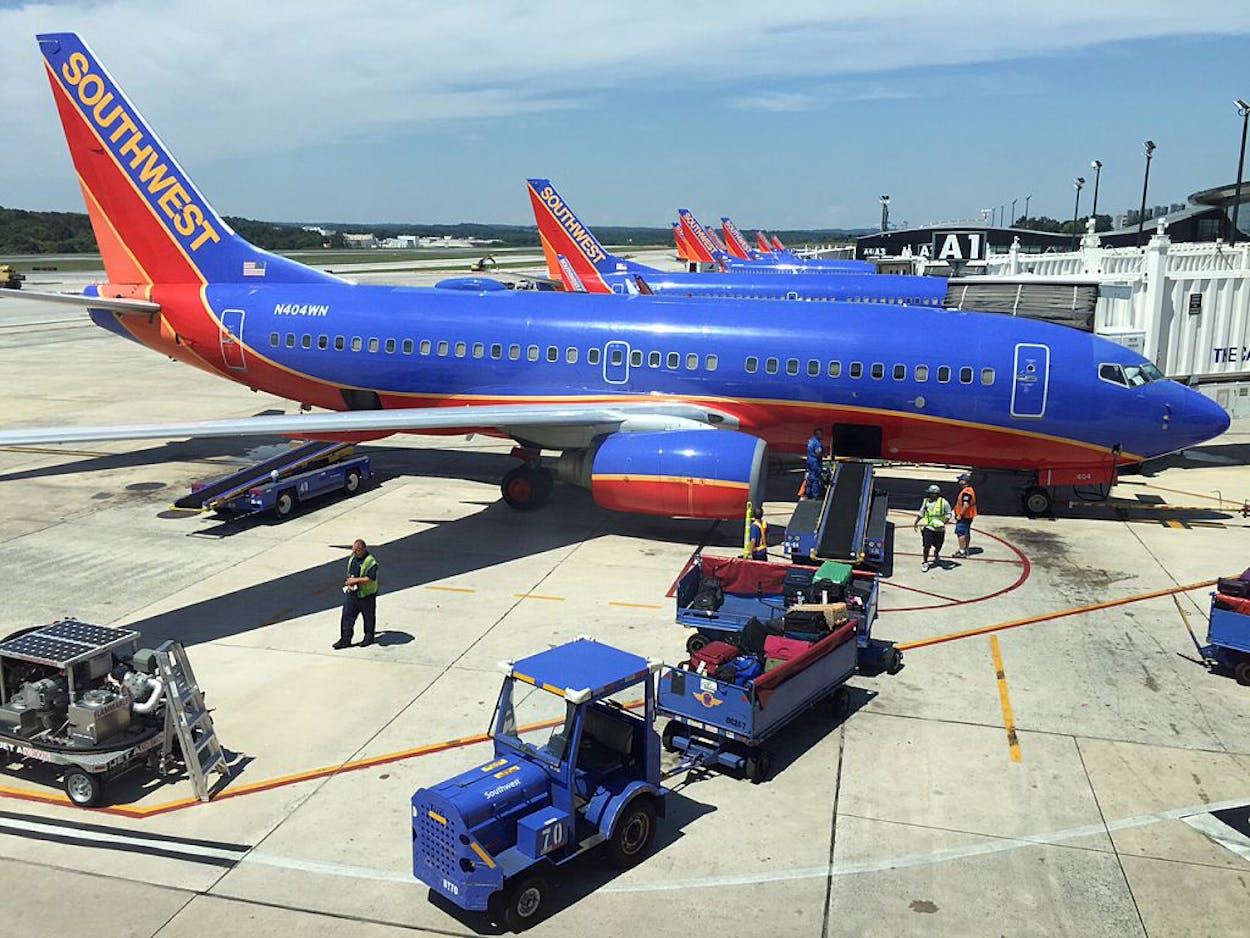From a PR standpoint, airlines in 2017 received some pretty valuable lessons. For example, don’t yank beaten, bloody passengers off of your planes; don’t be on the receiving end of viral accusations that you told a customer to pee in a cup instead of letting her out of her seat; don’t smack the phones out of the hands of children flying on your airline. Basically, if you’re just less tone-deaf than the competition, you can—er—fly more or less under the radar.
Southwest has managed to do a pretty good job of that so far this year. The controversies from that corner have been fairly tame—they kicked an unruly passenger off of a flight this week, and only tackled the dude after he tried to run back onto the plane. They responded to United’s scandal with the overbooked flight—and the subsequent removal of the doctor—by announcing a new policy that would end the practice of overbooking (in addition to adding red-eye flights for passengers interested in more options). And most recently, Southwest announced that they’re testing a new policy for exiting their flights that could make air travel more convenient.
The policy they’re testing involves allowing for two exits on the left side of the plane, instead of just the one at the front. The Dallas-based company is testing this policy for two weeks, starting Friday, at two California airports—Sacramento and San Jose—to measure if it’s faster than the current system, and if the so-called Dual Door Deplaning project is something that can be effectively implemented at more airports around the country.
Under this system, passengers getting off the plane will either get off at the gate or take stairs down on to the tarmac directly, depending on the door they use. (This is a practice that Southwest has already used in the past at the Los Angeles-area Bob Hope Airport in Burbank.) Southwest issued this statement explaining the practice:
Dual door operations have been implemented at a select number of our Southwest locations, including SMF, SJC, and BUR, and has proven successful in improving both on time performance as well as the Customer experience. The Dual Door Deplaning project focuses on just the deplaning process. To understand what resources and processes need to be in place to truly maximize utilization of Dual Door Deplaning we are launching a two-week test period starting on June 1 at SMF and SJC. During these two weeks, we will deplane as many inbound flights as possible through both available left side passenger doors. Dual door deplaning will involve one gate exit and one tarmac exit. The two-week project will help us determine when to use dual door deplaning, and to identify whether or not this process can be expanded to more airports across our network.








